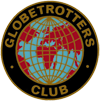Everyone has heard of the Kruger National Park. It's the biggest
game reserve in South Africa. Its border stretches from the Limpopo River
in the north to the Crocodile river in the south. The whole eastern boundary
of the park borders onto Mozambique.
The park was established in 1926 and is over 2 million hectares in size.
Its size can be likened to that of Wales or the American state of Massachusetts.
There are a large variety of animals in the park, ranging from 122 different
species of mammal, 109 different types of reptile, 55 species of fish
and 422 species of birds.
The park is also home to 7000+ Elephants, 30000 Buffalo, 120000 Impala
Buck and 22000 Kwaggas (Zebras). To add to this list you will also find
giraffe, lions, leopards, cheetahs, hunting dog, hyenas, rhino and hippos.
A visit to this park is a must and if you are not an animal mad person,
after your first visit here you will find that you have become one.
Most visitors to South Africa do not have enough time so a quick visit
is what they opt for. To get to the park they either travel by tourist
bus or fly in and land at Skukuza, the largest rest camp in the park.
There are many others to stay at as well.
At Skukuza you can hire a car and drive yourself, or elect to go by coach
on a guided tour through the park. There are a couple of rules one has
to follow in the park.
- Do not leave your car under any circumstances except in designated
rest areas.
- Keep to the speed limits.
There is a good reason for the rules. There are wild animals out in the
bush. You might get out of your car and walk slap bang into a lion lying
in thick grass right next to the road.
Guess who is going to win that argument! The lion initially, but once
it has killed someone it will kill again and become a threat, thus necessitating
its own demise.
The rest camp gates open at six in the morning and you are able to venture
out onto the roads. Suddenly 10 metres in front of you there is a movement
in the bush. You stop your car and one impala crosses the road. Sit still,
don't move, suddenly there are hundreds of them in the road. In about
10 minutes they have all crossed and the road is clear. Moving on you
come across a clump of rocks with some thorn bushes.
At the base of the thorn bush the grass is moving.
Taking a closer look you can see a largish animal lying on its side.
You've found a lion lying twitching its tail. It does this to rid
itself of the flies. Lions love to sleep in the shade in the heat of the
day and if you keep your eyes open you are likely to see more of them.
Leopards are very difficult to spot. Where there are largish trees, check
the higher branches and with a bit of luck you may spot one relaxing on
a branch.
At sundown its time to get to that water hole. Find a good spot where
you can see clearly, keep quiet and watch. The animals come from all directions
to drink. Impalas, kudus, warthogs and giraffe to name but a few. They
are very wary as they approach the waters edge. Have you noticed the log
floating close to the water's edge? It's a crocodile lying patiently
in the water with only its eyes sticking out waiting for its supper. If
an animal gets too close the crocodile will launch itself and grab its
prey, and drag it into the water where it will drown it.
The elephant in all its splendour arrives waving its trunk as it savours
the breeze. It's long white tusks glint in the evening sunlight as
it makes its way down to the river’s edge. Close behind come the rest
of the herd. Soon there is no place for the other animals, they must wait
their turn as the elephants suck up trunkfulls of water to drink and spray
over themselves.
It gets dark quickly so you need to get back to camp.
Along the way keep your eyes open for the nocturnal animals that should
be out and about. You would be amazed at what's out there.
When you get back to camp, have a meal, and hop into bed.
Before dropping off listen to the sounds of the bush. You'll hear
lions roaring and in the morning might even find their footprints around
your bungalow.
Love an experience like this?
Visit the Kruger National Park in South Africa.
Geoff Fairman is the editor and publisher of Banker's Oldboys Ezine,
a free electronic publication. Subscribe to Bankers Oldboys Ezine for
more articles about Cape Town and South Africa by sending a blank e-mail
to BrerRabbit-subscribe@topica.com
